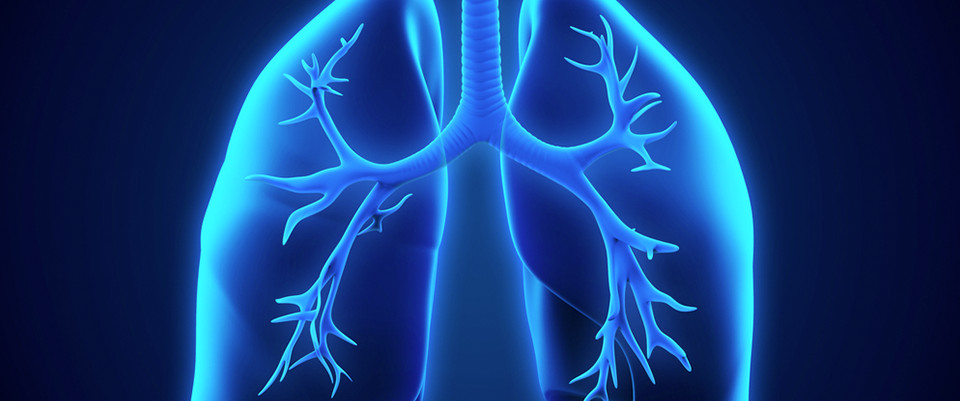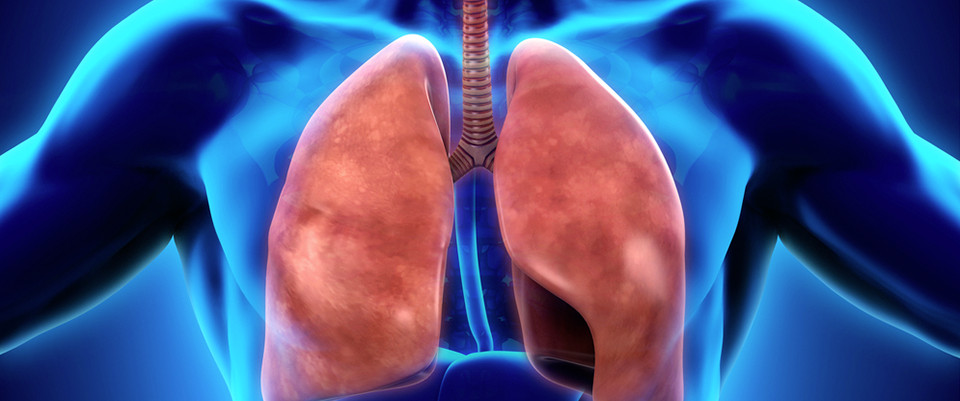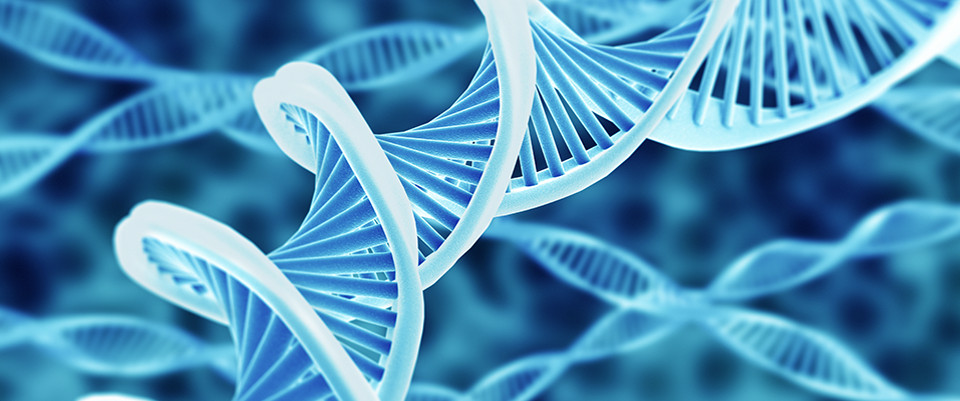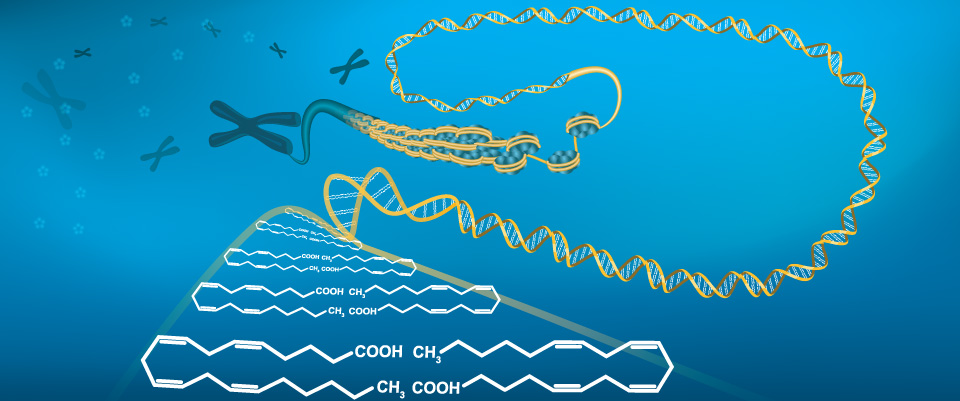PubMed
Proteomic Analysis of Urine Exosomes Reveals Renal Tubule Response to Leptospiral Colonization in Experimentally Infected Rats.
Proteomic Analysis of Urine Exosomes Reveals Renal Tubule Response to Leptospiral Colonization in Experimentally Infected Rats.
PLoS Negl Trop Dis. 2015 Mar;9(3):e0003640
Authors: RamachandraRao SP, Matthias MA, Mondrogon CK, Aghania E, Park C, Kong C, Ishaya M, Madrigal A, Horng J, Khoshaba R, Bounkhoun A, Basilico F, De Palma A, Agresta AM, Awdishu L, Naviaux RK, Vinetz JM, Mauri P
Abstract
BACKGROUND: Infectious Leptospira colonize the kidneys of reservoir (e.g. rats) and accidental hosts such as humans. The renal response to persistent leptospiral colonization, as measured by urinary protein biosignatures, has not been systematically studied. Urinary exosomes--bioactive membrane-bound nanovesicles--contain cell-state specific cargo that additively reflect formation all along the nephron. We hypothesized that Leptospira-infection will alter the content of urine exosomes, and further, that these Leptospira-induced alterations will hold clues to unravel novel pathways related to bacterial-host interactions.
METHODOLOGY/PRINCIPAL FINDINGS: Exosome protein content from 24 hour urine samples of Leptospira-infected rats was compared with that of uninfected rats using SDS-PAGE and liquid chromatography/tandem mass spectrometry (LC-MS/MS). Statistical models were used to identify significantly dysregulated proteins in Leptospira-infected and uninfected rat urine exosomes. In all, 842 proteins were identified by LC-MS/MS proteomics of total rat urine and 204 proteins associated specifically with exosomes. Multivariate analysis showed that 25 proteins significantly discriminated between uninfected control and infected rats. Alanyl (membrane) aminopeptidase, also known as CD13 topped this list with the highest score, a finding we validated by Western immunoblotting. Whole urine analysis showed Tamm-Horsfall protein level reduction in the infected rat urine. Total urine and exosome proteins were significantly different in male vs. female infected rats.
CONCLUSIONS: We identified exosome-associated renal tubule-specific responses to Leptospira infection in a rat chronic colonization model. Quantitative differences in infected male and female rat urine exosome proteins vs. uninfected controls suggest that urine exosome analysis identifies important differences in kidney function that may be of clinical and pathological significance.
PMID: 25793258 [PubMed - as supplied by publisher]
Quorum-sensing linked RNA interference for dynamic metabolic pathway control in Saccharomyces cerevisiae.
Quorum-sensing linked RNA interference for dynamic metabolic pathway control in Saccharomyces cerevisiae.
Metab Eng. 2015 Mar 16;
Authors: Williams TC, Averesch NJ, Winter G, Plan MR, Vickers CE, Nielsen LK, Krömer JO
Abstract
Some of the most productive metabolic engineering strategies involve genetic modifications that cause severe metabolic burden on the host cell. Growth-limiting genetic modifications can be more effective if they are 'switched on' after a population growth phase has been completed. To address this problem we have engineered dynamic regulation using a previously developed synthetic quorum sensing circuit in Saccharomyces cerevisiae. The circuit autonomously triggers gene expression at a high population density, and was linked with an RNA interference module to enable target gene silencing. As a demonstration the circuit was used to control flux through the shikimate pathway for the production of para-hydroxybenzoic acid (PHBA). Dynamic RNA repression allowed gene knock-downs which were identified by elementary flux mode analysis as highly productive but with low biomass formation to be implemented after a population growth phase, resulting in the highest published PHBA titer in yeast (1.1mM).
PMID: 25792511 [PubMed - as supplied by publisher]
Proteometabolomics of bladder cancer: Current and future prospects.
Proteometabolomics of bladder cancer: Current and future prospects.
Cancer Biomark. 2015 Mar 19;
Authors: Bansal N, Gupta A, Sankhwar SN
Abstract
Urinary bladder cancer (BC) is fifth most common cancer worldwide; the diagnostic methods are mostly instrumental approaches including cystoscopy and cytology. Since BC recurrence rate is high, consequently requires long-term follow-up. The molecular assays that can precisely identify BC at an early stage are obligatory. Although several noninvasive urine and blood samples based biomarkers have been proposed in the last decade but only few have been approved by Food and drug administration (FDA) for clinical purpose. Hence the search for more suitable biomarker is still on. In this review, we summarize the urine and blood based metabolic and protein tests not only for determination but also BC patient surveillance.
PMID: 25792474 [PubMed - as supplied by publisher]
Consumption of vitamin D2 enhanced mushrooms is associated with improved bone health.
Consumption of vitamin D2 enhanced mushrooms is associated with improved bone health.
J Nutr Biochem. 2015 Mar 5;
Authors: Chen SY, Yu HT, Kao JP, Yang CC, Chiang SS, Mishchuk DO, Mau JL, Slupsky CM
Abstract
Mushrooms are the best nonanimal food source of vitamin D2. Pulsed irradiation can enhance vitamin D2 in mushrooms quickly. We investigated the effect of supplementing high vitamin D2Pleurotus ferulae mushrooms in a mouse model of osteoporosis. Thirty-two female C57BL/6JNarl mice were divided into four groups including sham, ovariectomized (OVX), OVX+nonpulsed mushroom (NPM) and OVX+pulsed mushroom (PM). After 23weeks of treatment, serum samples were analyzed for osteoblast and osteoclast indicators, as well as metabolites using NMR spectroscopy. To examine bone density, femurs were analyzed using micro-computed tomography. The NPM and PM treatment mice showed increased bone density in comparison with OVX mice. In addition, the PM mice showed higher osteoblast and lower osteoclast indicators in comparison with OVX mice. Serum metabolomics analysis indicated several metabolites that were different in PM mice, some of which could be correlated with bone health. Taken together, these results suggest that pulsed irradiated mushrooms are able to increase bone density in osteoporotic mice possibly through enhanced bone metabolism. Further studies in humans are needed to show their efficacy in preventing osteoporosis.
PMID: 25792284 [PubMed - as supplied by publisher]
Metabolomic analysis reveals distinct profiles in the plasma and urine of rats fed a high-protein diet.
Metabolomic analysis reveals distinct profiles in the plasma and urine of rats fed a high-protein diet.
Amino Acids. 2015 Mar 20;
Authors: Mu C, Yang Y, Luo Z, Zhu W
Abstract
A high-protein, low-carbohydrate diet has been regarded as a dietary intervention for weight loss in the obese population. We integrated metabolomics profiles and correlation-based network analysis to reveal the difference in metabolism under diets with different protein:carbohydrate ratios. Rats were fed a control diet (moderate-protein moderate-carbohydrate: MPMC; 20 % protein, 56 % carbohydrate) or HPLC diet (high-protein low-carbohydrate: 45 % protein, 30 % carbohydrate) for 6 weeks. The fat content was equal for both diets. HPLC feeding induced weight loss and reduced adipose weight and plasma triglyceride. Compared to the MPMC diet, HPLC significantly increased plasma α-tocopherol, pyruvate, 2-oxoisocaproate, and β-hydroxybutyrate, and reduced linoleate, palmitate, α-glycerophosphate and pyroglutamic acid. The HPLC-associated urinary metabolite profile was signified with an increase in palmitate and stearate and a reduction of citrate, 2-ketoglutarate, malate, and pantothenate. Pathway analysis implicated a significant alteration of the TCA cycle in urine. Biomarker screening demonstrated that individual metabolites, including plasma urea, pyruvate, and urinary citrate, robustly distinguished the HPLC group from the MPMC group. Correlation-based network analysis enabled to demonstrate that the correlation of plasma metabolite was strengthened after the HPLC diet, while the energy-metabolism relatives 2-ketoglutarate and fumarate correlated positively with phenylalanine, methionine, and serine. The correlation network between plasma-urinary metabolites revealed a negative correlation of plasma valine with urinary β-hydroxybutyrate in MPMC rats. In HPLC rats, plasma 2-oxoisocaproate negatively correlated with urinary pyruvate and glycine. This study using metabolomics analysis revealed the systemic metabolism in response to diet treatment and identified the significantly distinct profiles associated with a HPLC diet.
PMID: 25792108 [PubMed - as supplied by publisher]
Isolating the metabolic pathways involved in the hepatoprotective effect of Muntingia calabura against CCl4-induced liver injury using LCMS Q-TOF.
Isolating the metabolic pathways involved in the hepatoprotective effect of Muntingia calabura against CCl4-induced liver injury using LCMS Q-TOF.
J Ethnopharmacol. 2015 Mar 16;
Authors: Rofiee MS, Yusof MI, Abdul Hisam EE, Bannur Z, Zakaria ZA, Somchit MN, Teh LK, Salleh MZ
Abstract
ETHNOPHARMACOLOGICAL RELEVANCE: Muntingia calabura L. have been used in Southeast Asia and tropical America as antipyretic, antiseptic, analgesic, antispasmodic and liver tonic. This study aims to determine the acute toxicity and the metabolic pathways involved in the hepatoprotective mechanism of M. calabura.
MATERIALS AND METHODS: CCl4-induced hepatotoxic rat model was developed and a dose dependent effect of M. calabura was conducted. Body weight, food and water consumption were measured every day and rats were sacrificed to collect the serum samples at the end of the 10-days treatment. Liquid chromatography-mass spectrometry quadrapole time of flight (LC/MS-QTOF) combined with principal component analysis (PCA) were used to determine differentially expressed metabolites due to treatment with CCl4 and M. calabura extracts. Metabolomics Pathway Analysis (MetPA) was used for analysis and visualization of pathways involved.
RESULTS: Body weight, food and water consumption were significantly decreased and histopathological study revealed steatosis in CCl4-induced rats. PCA score plots show distinct separation in the metabolite profiles of the normal group, CCl4-treated group and extract of M. calabura (MCME) pre-treated groups. Biomarkers network reconstruction using MetPA had identified 2 major pathways which were involved in the protective mechanism of MCME. These include the (i) biosynthesis of the primary bile acid, (ii) metabolism of arachidonic acid.
CONCLUSION: This study has successfully isolated 2 major pathways involved in the hepatoprotecive effect of MCME against CCl4-induced liver injury using LCMS Q-TOF metabolomics approach. The involvement of archidonic acid and purine metabolism in hepatoprotection has not been reported previously and may provide new therapeutic targets and/or options for the treatment of liver injury.
PMID: 25792013 [PubMed - as supplied by publisher]
Phenotypic and molecular diversity of Meyerozyma guilliermondii strains isolated from food and other environmental niches, hints for an incipient speciation.
Phenotypic and molecular diversity of Meyerozyma guilliermondii strains isolated from food and other environmental niches, hints for an incipient speciation.
Food Microbiol. 2015 Jun;48:206-15
Authors: Corte L, di Cagno R, Groenewald M, Roscini L, Colabella C, Gobbetti M, Cardinali G
Abstract
Meyerozyma guilliermondii is a yeast species widely isolated from several natural environments and from fruit; in medical microbiology it is known as the teleomorph of the opportunistic pathogen Candida guilliermondii, which causes about 2% of the human blood infections. This yeast is also promising in a variety of biotechnological applications as vitamins production and post-harvest control. The question if isolates from different sources are physiologically and genetically similar, or if the various environments induced significant differences, is crucial for the understanding of this species structure and to select strains appropriate for each application. This question was addressed using LSU and ITS sequencing for taxonomic assignment, i-SSR (GACA4) for the molecular characterization and FTIR for the metabolomic fingerprint. All data showed that fruit and environmental isolates cluster separately with a general good agreement between metabolomics and molecular analysis. An additional RAPD analysis was able to discriminate strains according to the isolation position within the pineapple fruit. Although all strains are members of the M. guilliermondii species according to the current standards, the distribution of large variability detected suggests that some specialization occurred in the niches inhabited by this yeast and that food related strains can be differentiated from the medical isolates.
PMID: 25791010 [PubMed - in process]
Identification of metabolic markers in Coronary Artery Disease using an untargeted LC-MS based metabolomics approach.
Identification of metabolic markers in Coronary Artery Disease using an untargeted LC-MS based metabolomics approach.
J Proteomics. 2015 Mar 16;
Authors: Basak T, Varshney S, Hamid Z, Ghosh S, Seth S, Sengupta S
Abstract
Coronary artery disease (CAD), a complex metabolic disorder, is one of the largest cause of death worldwide. Both environmental and genetic factors contribute to the etiology of this metabolic disease. The gene-environment interaction could lead to modulation of various metabolic pathways resulting in altered levels of various metabolites. Thus, identifying metabolites could aid in deciphering pathways that could be involved in the pathophysiology of the disease. With the advent of high resolution mass spectrometry based methodologies, it is now possible to screen thousands of metabolites in a single snapshot thus, allowing the identification of potential disease metabolite markers. In this work, using an untargeted metabolomics approach, we attempted to identify metabolites that have altered levels in CAD patients. Using reverse phase and HILIC based chromatography followed by mass spectrometry we identified a total of 32 metabolites (2 fold; p <0.05) in plasma whose levels were significantly altered in CAD samples. Further, we have validated the discriminative ability of these metabolites in an independent set of CAD and control samples using multivariate PLS-DA analysis. Interestingly, Lyso PC(18:0), Cortisol, Lyso PC (P-17:0), glycerophosphocholine were among the top discriminators for CAD which implies involvement of phosphatidylcholine pathway in the pathogenesis of atherosclerosis.
BIOLOGICAL SIGNIFICANCE: Herein, we report that an unbiased metabolomics study have the potential to identify newer markers which are involved in several important biological pathways like lipid metabolism, phosphatidylcholine pathway etc. which in turn are implicated in CAD. These markers could be of potential clinical importance for screening subjects at risk of CAD. This article is part of a Special Issue entitled: Proteomics in India.
PMID: 25790721 [PubMed - as supplied by publisher]
Revisiting Corynebacterium glyciniphilum (ex Kubota et al., 1972) sp. nov., nom. rev., isolated from putrefied banana.
Related Articles
Revisiting Corynebacterium glyciniphilum (ex Kubota et al., 1972) sp. nov., nom. rev., isolated from putrefied banana.
Int J Syst Evol Microbiol. 2015 Jan;65(Pt 1):177-82
Authors: Al-Dilaimi A, Bednarz H, Lömker A, Niehaus K, Kalinowski J, Rückert C
Abstract
A strain of a species of the genus Corynebacterium, designated AJ 3170(T), was isolated during the 1980s from putrefied bananas. Since then, there have been no further updates on the description of the strain or its phylogenetic classification. However, phylogenetic analysis of this strain using 16S rRNA and in silico DNA-DNA hybridization has confirmed that it is a member of the genus Corynebacterium and that strain AJ 3170(T) clusters with Corynebacterium variabile DSM 44702(T), Corynebacterium terpenotabidum Y-11(T) and Corynebacterium nuruki S6-4(T) in one subgroup. Furthermore, a combination of enzymatic, chemical, and morphological characterization techniques was applied in order to describe strain AJ 3170(T) further. The strain grew well at pH values of 6-10 and at temperatures of 30-41 °C. The major fatty acids were C16 : 0 (42.15 %), C18 : 1ω9c (41.6 %) and C18 : 0 10-methyl (TBSA) (8.56 %). The whole-cell sugars were determined to comprise galactose, arabinose and ribose. On the basis of this phenotypic, chemotaxonomic and phylogenetic characterization, it is proposed that strain AJ 3170(T) represents a novel species, for which the name Corynebacterium glyciniphilum sp. nov. is proposed; the type strain is AJ 3170(T) ( = DSM 45795(T) = ATCC 21341(T)).
PMID: 25323597 [PubMed - indexed for MEDLINE]
metabolomics; +21 new citations
21 new pubmed citations were retrieved for your search.
Click on the search hyperlink below to display the complete search results:
metabolomics
These pubmed results were generated on 2015/03/20PubMed comprises more than 24 million citations for biomedical literature from MEDLINE, life science journals, and online books.
Citations may include links to full-text content from PubMed Central and publisher web sites.
Study of the Cardiotoxicity of Venenum Bufonis in Rats using an 1H NMR-Based Metabolomics Approach.
Study of the Cardiotoxicity of Venenum Bufonis in Rats using an 1H NMR-Based Metabolomics Approach.
PLoS One. 2015;10(3):e0119515
Authors: Dong G, Wei D, Wang J, Guo P, Li M, Yang M, Kong L
Abstract
Venenum Bufonis, a well-known traditional Chinese medicine, has been widely used in Asia and has gained popularity in Western countries over the last decade. Venenum Bufonis has obvious side effects that have been observed in clinical settings, but few studies have reported on its cardiotoxicity. In this work, the cardiotoxicity of Venenum Bufonis was investigated using a 11H NMR-based metabolomics approach. The 1H NMR profiles of the serum, myocardial extracts and liver extracts of specific-pathogen-free rats showed that Venenum Bufonis produced significant metabolic perturbations dose-dependently with a distinct time effect, peaking at 2 hr after dosing and attenuating gradually. Clinical chemistry, electrocardiographic recordings, and histopathological evaluation provided additional evidence of Venenum Bufonis-induced cardiac damage that complemented and supported the metabolomics findings. The combined results demonstrated that oxidative stress, mitochondrial dysfunction, and energy metabolism perturbations were associated with the cardiac damage that results from Venenum Bufonis.
PMID: 25781638 [PubMed - as supplied by publisher]
Quality assessment of Fructus Ligustri Lucidi by the simultaneous determination of six compounds and chemometric analysis.
Quality assessment of Fructus Ligustri Lucidi by the simultaneous determination of six compounds and chemometric analysis.
J Sep Sci. 2015 Mar 17;
Authors: Yao W, Dai J, Zheng C, Bao B, Cheng H, Zhang L, Ding A, Li W
Abstract
A comprehensive strategy was designed for the quality assessment of Fructus Ligustri Lucidi, a well-known and commonly used herbal medicine in clinical practice in China. First, a simple and stable method of high-performance liquid chromatography was developed for the simultaneous quantitative analysis of six compounds, namely, salidroside, nuzhenide, specnuezhenide, oleanic acid, ursolic acid and acetyl oleanic acid in Fructus Ligustri Lucidi. The separation of analytes was conducted on a C18 column (200 × 4.6 mm, 5 μm) at 30°C, and the wavelength of UV detector was set at 210 nm. In quantitative analysis, all of the calibration curves showed good linear regression (R(2) > 0.9994) within the tested ranges, and the mean recoveries of three different concentrations ranged from 95.21-102.34%. The described method was applied to determine 11 batches of samples collected from different stores in China. Then multiple chemometrics analysis including hierarchical cluster analysis and principal component analysis were performed to classify samples and search significant compounds. Three notable compounds, specnuezhenide, oleanic acid and acetyl oleanic acid, were discovered for better quality control compared with those stated in the China pharmacopeia. The results demonstrated that this strategy could be readily utilized for the comprehensive quality control of Fructus Ligustri Lucidi. This article is protected by copyright. All rights reserved.
PMID: 25781582 [PubMed - as supplied by publisher]
A multi-platform metabolomics approach demonstrates changes in energy metabolism and the transsulfuration pathway in Chironomus tepperi following exposure to zinc.
A multi-platform metabolomics approach demonstrates changes in energy metabolism and the transsulfuration pathway in Chironomus tepperi following exposure to zinc.
Aquat Toxicol. 2015 Mar 10;162:54-65
Authors: Long SM, Tull DL, Jeppe KJ, De Souza DP, Dayalan S, Pettigrove VJ, McConville MJ, Hoffmann AA
Abstract
Measuring biological responses in resident biota is a commonly used approach to monitoring polluted habitats. The challenge is to choose sensitive and, ideally, stressor-specific endpoints that reflect the responses of the ecosystem. Metabolomics is a potentially useful approach for identifying sensitive and consistent responses since it provides a holistic view to understanding the effects of exposure to chemicals upon the physiological functioning of organisms. In this study, we exposed the aquatic non-biting midge, Chironomus tepperi, to two concentrations of zinc chloride and measured global changes in polar metabolite levels using an untargeted gas chromatography-mass spectrometry (GC-MS) analysis and a targeted liquid chromatography-mass spectrometry (LC-MS) analysis of amine-containing metabolites. These data were correlated with changes in the expression of a number of target genes. Zinc exposure resulted in a reduction in levels of intermediates in carbohydrate metabolism (i.e., glucose 6-phosphate, fructose 6-phosphate and disaccharides) and an increase in a number of TCA cycle intermediates. Zinc exposure also resulted in decreases in concentrations of the amine containing metabolites, lanthionine, methionine and cystathionine, and an increase in metallothionein gene expression. Methionine and cystathionine are intermediates in the transsulfuration pathway which is involved in the conversion of methionine to cysteine. These responses provide an understanding of the pathways affected by zinc toxicity, and how these effects are different to other heavy metals such as cadmium and copper. The use of complementary metabolomics analytical approaches was particularly useful for understanding the effects of zinc exposure and importantly, identified a suite of candidate biomarkers of zinc exposure useful for the development of biomonitoring programs.
PMID: 25781392 [PubMed - as supplied by publisher]
Multi-omic signature of body weight change: results from a population-based cohort study.
Multi-omic signature of body weight change: results from a population-based cohort study.
BMC Med. 2015 Dec;13(1):282
Authors: Wahl S, Vogt S, Stückler F, Krumsiek J, Bartel J, Kacprowski T, Schramm K, Carstensen M, Rathmann W, Roden M, Jourdan C, Kangas AJ, Soininen P, Ala-Korpela M, Nöthlings U, Boeing H, Theis FJ, Meisinger C, Waldenberger M, Suhre K, Homuth G, Gieger C, Kastenmüller G, Illig T, Linseisen J, Peters A, Prokisch H, Herder C, Thorand B, Grallert H
Abstract
BACKGROUND: Excess body weight is a major risk factor for cardiometabolic diseases. The complex molecular mechanisms of body weight change-induced metabolic perturbations are not fully understood. Specifically, in-depth molecular characterization of long-term body weight change in the general population is lacking. Here, we pursued a multi-omic approach to comprehensively study metabolic consequences of body weight change during a seven-year follow-up in a large prospective study.
METHODS: We used data from the population-based Cooperative Health Research in the Region of Augsburg (KORA) S4/F4 cohort. At follow-up (F4), two-platform serum metabolomics and whole blood gene expression measurements were obtained for 1,631 and 689 participants, respectively. Using weighted correlation network analysis, omics data were clustered into modules of closely connected molecules, followed by the formation of a partial correlation network from the modules. Association of the omics modules with previous annual percentage weight change was then determined using linear models. In addition, we performed pathway enrichment analyses, stability analyses, and assessed the relation of the omics modules with clinical traits.
RESULTS: Four metabolite and two gene expression modules were significantly and stably associated with body weight change (P-values ranging from 1.9 × 10(-4) to 1.2 × 10(-24)). The four metabolite modules covered major branches of metabolism, with VLDL, LDL and large HDL subclasses, triglycerides, branched-chain amino acids and markers of energy metabolism among the main representative molecules. One gene expression module suggests a role of weight change in red blood cell development. The other gene expression module largely overlaps with the lipid-leukocyte (LL) module previously reported to interact with serum metabolites, for which we identify additional co-expressed genes. The omics modules were interrelated and showed cross-sectional associations with clinical traits. Moreover, weight gain and weight loss showed largely opposing associations with the omics modules.
CONCLUSIONS: Long-term weight change in the general population globally associates with serum metabolite concentrations. An integrated metabolomics and transcriptomics approach improved the understanding of molecular mechanisms underlying the association of weight gain with changes in lipid and amino acid metabolism, insulin sensitivity, mitochondrial function as well as blood cell development and function.
PMID: 25779741 [PubMed - in process]
Metabolomics of Mycobacterium tuberculosis.
Metabolomics of Mycobacterium tuberculosis.
Methods Mol Biol. 2015;1285:105-15
Authors: Nandakumar M, Prosser GA, de Carvalho LP, Rhee K
Abstract
Enzymes fuel the biochemical activities of all cells. Their substrates and products thus offer a potential window into the physiologic state of a cell. Metabolomics focuses on the global, or systems-level, study of small molecules in a given biological system and thus provided an experimental tool with which to study cellular physiology on a global biochemical scale. While metabolomic studies of Mycobacterium tuberculosis are still in their infancy, recent studies have begun to deliver unique insights into the composition, organization, activity, and regulation of M. tuberculosis' physiologic network. Here, we outline practical methods for the culture, collection, and analysis of metabolomic samples from Mycobacterium tuberculosis that emphasize minimal sample perturbation, broad and native metabolite recovery, and sensitive, biologically agnostic metabolite detection.
PMID: 25779312 [PubMed - in process]
Population pharmacokinetic modeling of the Qishe pill in three major traditional Chinese medicine-defined constitutional types of healthy Chinese subjects: study protocol for a randomized controlled trial.
Population pharmacokinetic modeling of the Qishe pill in three major traditional Chinese medicine-defined constitutional types of healthy Chinese subjects: study protocol for a randomized controlled trial.
Trials. 2015 Dec;16(1):568
Authors: Sun YL, Hou T, Liu SF, Zhang ZL, Zhang N, Yao M, Yang L, Shi Q, Cui XJ, Wang YJ
Abstract
BACKGROUND: High incidences of neck pain morbidity are challenging in various situations for populations based on their demographic, physiological and pathological characteristics. Chinese proprietary herbal medicines, as Complementary and Alternative Medicine (CAM) products, are usually developed from well-established and long-standing recipes formulated as tablets or capsules. However, good quantification and strict standardization are still needed for implementation of individualized therapies. The Qishe pill was developed and has been used clinically since 2009. The Qishe pill's personalized medicine should be documented and administered to various patients according to the ancient TCM system, a classification of personalized constitution types, established to determine predisposition and prognosis to diseases as well as therapy and life-style administration. Therefore, we describe the population pharmacokinetic profile of the Qishe pill and compare its metabolic rate in the three major constitution types (Qi-Deficiency, Yin-Deficiency and Blood-Stasis) to address major challenges to individualized standardized TCM.
METHODS/DESIGN: Healthy subjects (N = 108) selected based on constitutional types will be assessed, and standardized pharmacokinetic protocol will be used for assessing demographic, physiological, and pathological data. Laboratory biomarkers will be evaluated and blood samples collected for pharmacokinetics(PK) analysis and second-generation gene sequencing. In single-dose administrations, subjects in each constitutional type cohort (N = 36) will be randomly divided into three groups to receive different Qishe pill doses (3.75, 7.5 and 15 grams). Multiomics, including next generation sequencing, metabolomics, and proteomics, will complement the Qishe pill's multilevel assessment, with cytochrome P450 genes as targets. In a comparison with the general population, a systematic population pharmacokinetic (PopPK) model for the Qishe pill will be established and verified.
TRIAL REGISTRATION: This study is registered at ClinicalTrials.gov, NCT02294448 .15 November 2014.
PMID: 25778569 [PubMed - in process]
Human metabolic response to systemic inflammation: assessment of the concordance between experimental endotoxemia and clinical cases of sepsis/SIRS.
Human metabolic response to systemic inflammation: assessment of the concordance between experimental endotoxemia and clinical cases of sepsis/SIRS.
Crit Care. 2015 Dec;19(1):783
Authors: Kamisoglu K, Haimovich B, Calvano SE, Coyle SM, Corbett SA, Langley RJ, Kingsmore SF, Androulakis IP
Abstract
INTRODUCTION: Two recent, independent, studies conducted novel metabolomics analyses relevant to human sepsis progression; one was a human model of endotoxin (lipopolysaccharide (LPS)) challenge (experimental endotoxemia) and the other was community acquired pneumonia and sepsis outcome diagnostic study (CAPSOD). The purpose of the present study was to assess the concordance of metabolic responses to LPS and community-acquired sepsis.
METHODS: We tested the hypothesis that the patterns of metabolic response elicited by endotoxin would agree with those in clinical sepsis. Alterations in the plasma metabolome of the subjects challenged with LPS were compared with those of sepsis patients who had been stratified into two groups: sepsis patients with confirmed infection and non-infected patients who exhibited systemic inflammatory response syndrome (SIRS) criteria. Common metabolites between endotoxemia and both these groups were individually identified, together with their direction of change and functional classifications.
RESULTS: Response to endotoxemia at the metabolome level elicited characteristics that agree well with those observed in sepsis patients despite the high degree of variability in the response of these patients. Moreover, some distinct features of SIRS have been identified. Upon stratification of sepsis patients based on 28-day survival, the direction of change of 21 of 23 metabolites was the same in endotoxemia and sepsis survival groups.
CONCLUSIONS: The observed concordance in plasma metabolomes of LPS-treated subjects and sepsis survivors strengthens the relevance of endotoxemia to clinical research as a physiological model of community-acquired sepsis, and gives valuable insights into the metabolic changes that constitute a homeostatic response. Furthermore, recapitulation of metabolic differences between sepsis non-survivors and survivors in LPS-treated subjects can enable further research on the development and assessment of rational clinical therapies to prevent sepsis mortality. Compared with earlier studies which focused exclusively on comparing transcriptional dynamics, the distinct metabolomic responses to systemic inflammation with or without confirmed infection, suggest that the metabolome is much better at differentiating these pathophysiologies. Finally, the metabolic changes in the recovering patients shift towards the LPS-induced response pattern strengthening the notion that the metabolic, as well as transcriptional responses, characteristic to the endotoxemia model represent necessary and "healthy" responses to infectious stimuli.
PMID: 25777877 [PubMed - in process]
Integration of metabolic and inflammatory mediator profiles as a potential prognostic approach for septic shock in the intensive care unit.
Integration of metabolic and inflammatory mediator profiles as a potential prognostic approach for septic shock in the intensive care unit.
Crit Care. 2015 Dec;19(1):729
Authors: Mickiewicz B, Tam P, Jenne CN, Leger C, Wong J, Winston BW, Doig C, Kubes P, Vogel HJ, Alberta Sepsis Network
Abstract
INTRODUCTION: Septic shock is a major life-threatening condition in critically ill patients and it is well known that early recognition of septic shock and expedient initiation of appropriate treatment improves patient outcome. Unfortunately, to date no single compound has shown sufficient sensitivity and specificity to be used as a routine biomarker for early diagnosis and prognosis of septic shock in the intensive care unit (ICU). Therefore, the identification of new diagnostic tools remains a priority for increasing the survival rate of ICU patients. In this study, we have evaluated whether a combined nuclear magnetic resonance spectroscopy-based metabolomics and a multiplex cytokine/chemokine profiling approach could be used for diagnosis and prognostic evaluation of septic shock patients in the ICU.
METHODS: Serum and plasma samples were collected from septic shock patients and ICU controls (ICU patients with the systemic inflammatory response syndrome but not suspected of having an infection). (1)H Nuclear magnetic resonance spectra were analyzed and quantified using the targeted profiling methodology. The analysis of the inflammatory mediators was performed using human cytokine and chemokine assay kits.
RESULTS: By using multivariate statistical analysis we were able to distinguish patient groups and detect specific metabolic and cytokine/chemokine patterns associated with septic shock and its mortality. These metabolites and cytokines/chemokines represent candidate biomarkers of the human response to septic shock and have the potential to improve early diagnosis and prognosis of septic shock.
CONCLUSIONS: Our findings show that integration of quantitative metabolic and inflammatory mediator data can be utilized for the diagnosis and prognosis of septic shock in the ICU.
PMID: 25777843 [PubMed - in process]
Distinct serum metabolomics profiles associated with malignant progression in the Kras(G12D) mouse model of pancreatic ductal adenocarcinoma.
Distinct serum metabolomics profiles associated with malignant progression in the Kras(G12D) mouse model of pancreatic ductal adenocarcinoma.
BMC Genomics. 2015 Dec;16(1):6935
Authors: LaConti JJ, Laiakis EC, Mays AD, Peran I, Kim SE, Shay JW, Riegel AT, Fornace AJ, Wellstein A
Abstract
BACKGROUND: Pancreatic ductal adenocarcinoma (PDAC) is the fourth leading cause of cancer deaths worldwide with less than a 6% 5-year survival rate. PDAC is associated with poor prognosis based on the late stage diagnosis of the disease. Current diagnostic tests lack the sensitivity and specificity to identify markers of early staging. Metabolomics has provided biomarkers for various diseases, stressors, and environmental exposures. In this study we utilized the p48-Cre/LSL-Kras(G12D) mouse model with age-matched wild type mice. This model shows malignant progression to PDAC analogous to the human disease stages via early and late pancreatic intra-epithelial neoplasia (PanIN) lesions.
RESULTS: Serum was collected from mice with early PanIN lesions (at 3-5 months) and with late PanIN or invasive PDAC lesions (13-16 months), as determined by histopathology. Metabolomics analysis of the serum samples was conducted through UPLC-TOFMS (Ultra Performance Liquid Chromatography coupled to Time-of-flight Mass Spectrometry). Multivariate data analysis revealed distinct metabolic patterns in serum samples collected during malignant progression towards invasive PDAC. Animals with early or late stage lesions were distinguished from their respective controls with 82.1% and 81.5% accuracy, respectively. This also held up for randomly selected subgroups in the late stage lesion group that showed less variability between animals. One of the metabolites, citrate, was validated through tandem mass spectrometry and showed increased levels in serum with disease progression. Furthermore, serum metabolite signatures from animals with early stage lesions identified controls and animals with late stage lesions with 81.5% accuracy (p<0.01) and vice-versa with 73.2% accuracy (p<0.01).
CONCLUSIONS: We conclude that metabolomics analysis of serum samples can identify the presence of early and late stage pancreatic cancer.
PMID: 25776721 [PubMed - in process]
T-cell metabolism in autoimmune disease.
T-cell metabolism in autoimmune disease.
Arthritis Res Ther. 2015 Dec;17(1):542
Authors: Yang Z, Matteson EL, Goronzy JJ, Weyand CM
Abstract
Cancer cells have long been known to fuel their pathogenic growth habits by sustaining a high glycolytic flux, first described almost 90 years ago as the so-called Warburg effect. Immune cells utilize a similar strategy to generate the energy carriers and metabolic intermediates they need to produce biomass and inflammatory mediators. Resting lymphocytes generate energy through oxidative phosphorylation and breakdown of fatty acids, and upon activation rapidly switch to aerobic glycolysis and low tricarboxylic acid flux. T cells in patients with rheumatoid arthritis (RA) and systemic lupus erythematosus (SLE) have a disease-specific metabolic signature that may explain, at least in part, why they are dysfunctional. RA T cells are characterized by low adenosine triphosphate and lactate levels and increased availability of the cellular reductant NADPH. This anti-Warburg effect results from insufficient activity of the glycolytic enzyme phosphofructokinase and differentiates the metabolic status in RA T cells from those in cancer cells. Excess production of reactive oxygen species and a defect in lipid metabolism characterizes metabolic conditions in SLE T cells. Owing to increased production of the glycosphingolipids lactosylceramide, globotriaosylceramide and monosialotetrahexosylganglioside, SLE T cells change membrane raft formation and fail to phosphorylate pERK, yet hyperproliferate. Borrowing from cancer metabolomics, the metabolic modifications occurring in autoimmune disease are probably heterogeneous and context dependent. Variations of glucose, amino acid and lipid metabolism in different disease states may provide opportunities to develop biomarkers and exploit metabolic pathways as therapeutic targets.
PMID: 25776624 [PubMed - in process]











